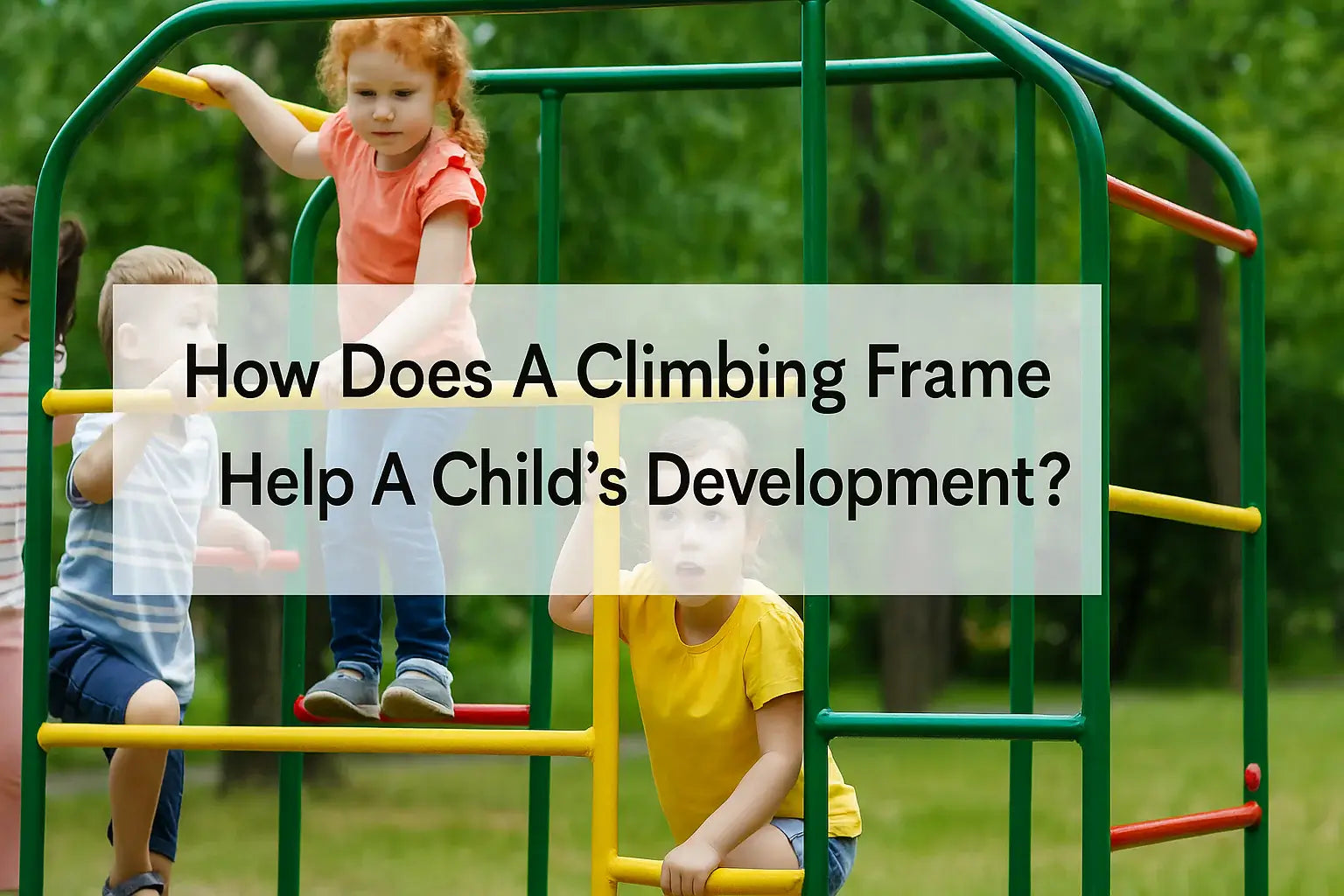
How Does A Climbing Frame Help A Child's Development?
Ever watched your child turn a climbing frame into a pirate ship, castle, or jungle gym?
Short answer: children’s climbing frames help kids grow stronger, think smarter, and play better together.
These structures do more than just fill time in the garden or park. They secretly build muscles, sharpen thinking skills, and teach children how to work as a team — all while they’re having fun.
Want to know how something so simple does all that? Let’s break it down.

The Physical Advantages of Climbing Frames
Boosting Motor Skills, Strength, and Overall Physical Health
Climbing frames are like mini obstacle courses built just for kids. They're perfect for little bodies that love to move. And let’s be honest — most kids would rather climb a wall than do star jumps in PE.
They’re not just burning energy; they’re building it.
Gross Motor Development and Coordination
Think of climbing frames as a mini gym. Every climb, swing, and jump builds gross motor skills. Climbing ladders? That’s building leg strength. Monkey bars? Upper-body power and grip strength.
And when they balance across a rope bridge or leap from one platform to another? That’s coordination in action.
Fine Motor Skills and Dexterity
It’s not all big moves either. Holding onto rungs, gripping ropes, twisting round bars — it’s all fine motor skill practice.
Those small movements help strengthen their fingers and hands, making day-to-day tasks (like tying shoelaces or using scissors) a bit easier over time.
Health Benefits and Active Play
Active kids are healthy kids. Climbing frames get their heart pumping, lungs working, and muscles moving. It’s a full-body workout disguised as fun.
It also helps with sleep, appetite, and even mood. Who knew that 20 minutes on a climbing frame could be better than a walk around the block?

Cultivating Mental and Socio-Emotional Growth
Enhancing Cognitive Abilities and Creative Thinking
Climbing frames don’t just test muscles — they challenge minds too. From figuring out the fastest way to the top to working out how to cross without falling, kids are constantly solving problems.
Problem-Solving and Decision-Making
Imagine your child halfway up a climbing wall. They’ve hit a tricky spot. What now? Left foot or right foot? Reach or drop?
That quick thinking builds decision-making skills and boosts confidence when they figure it out.
Spatial Awareness and Focus
Climbing frames help children understand where their body is in space — a big part of what’s called spatial awareness.
They learn to judge distances, plan their next move, and focus their attention. It’s like parkour for the brain.
Imaginative Play
Now add in a dose of imagination. That tower becomes a dragon’s cave. The rope bridge? A plank over crocodile-infested waters.
Climbing frames aren’t just physical tools. They’re a launchpad for creative thinking and storytelling.

Fostering Emotional Intelligence and Social Skills
Climbing frames are often shared spaces, and that’s where the real learning happens.
Confidence, Self-Esteem, and Resilience
Getting to the top of a frame isn’t just exciting — it’s empowering.
Each challenge overcome builds confidence. And when they slip or can’t quite make it? That’s a moment to try again — and resilience grows.
Cooperation, Communication, and Emotional Regulation
Whether it’s deciding who goes next, helping a friend across, or waiting patiently for a turn, climbing frames are social training grounds.
Kids practise empathy, communication, and managing emotions — all in the middle of a game.
Have you checked out our other posts?
What Are The Benefits Of Climbing Frames?
What Age Is Appropriate For A Climbing Frame?
What Age Are Climbing Frames For?


Leave a comment